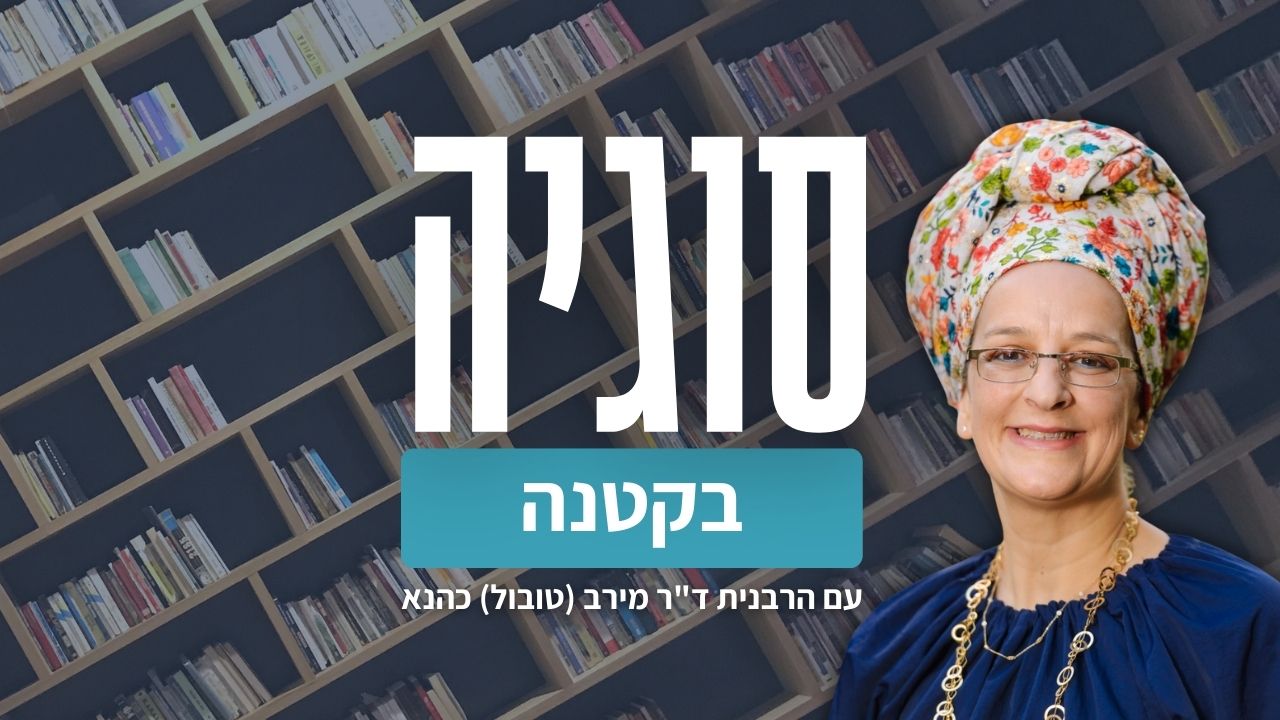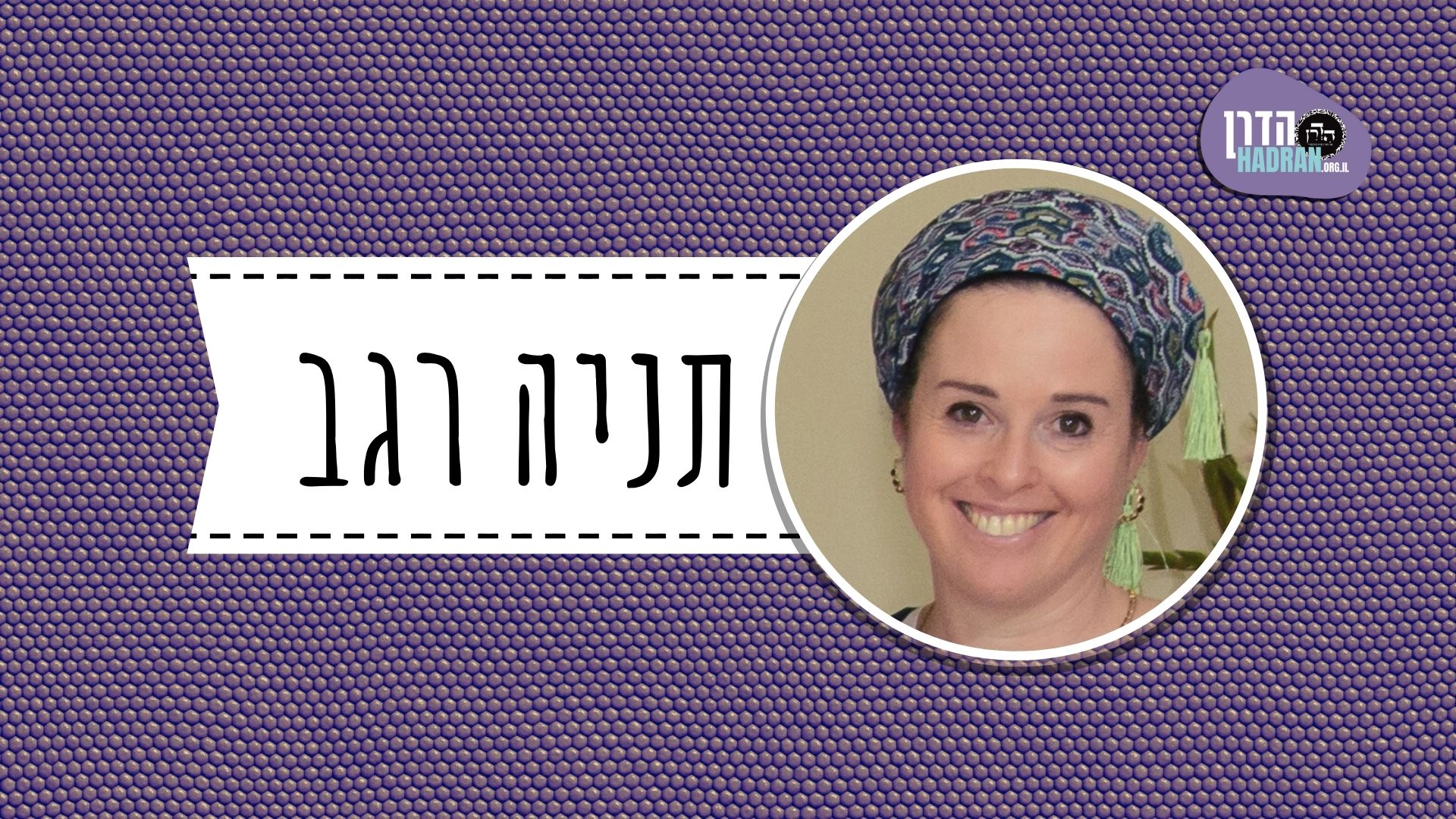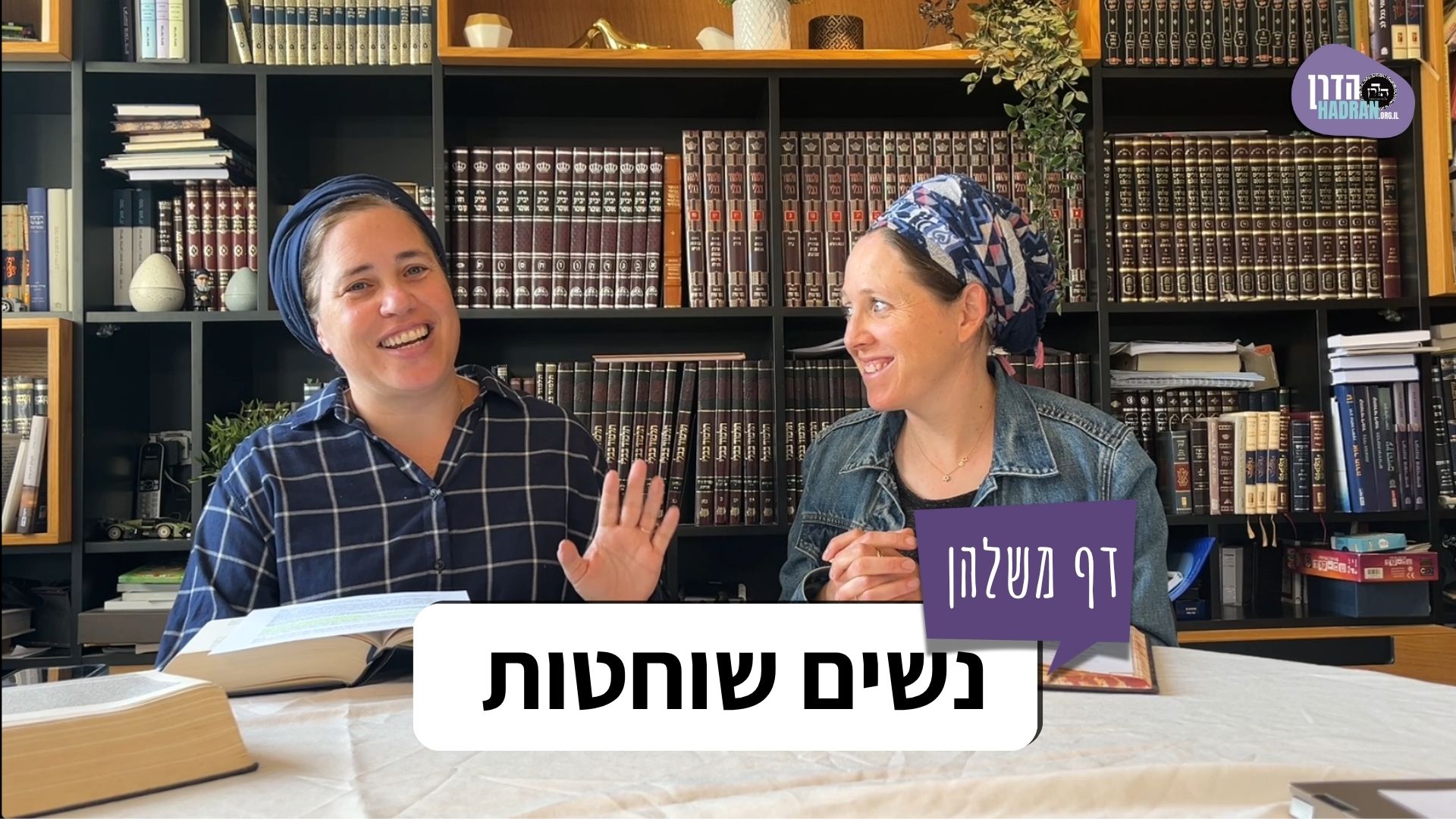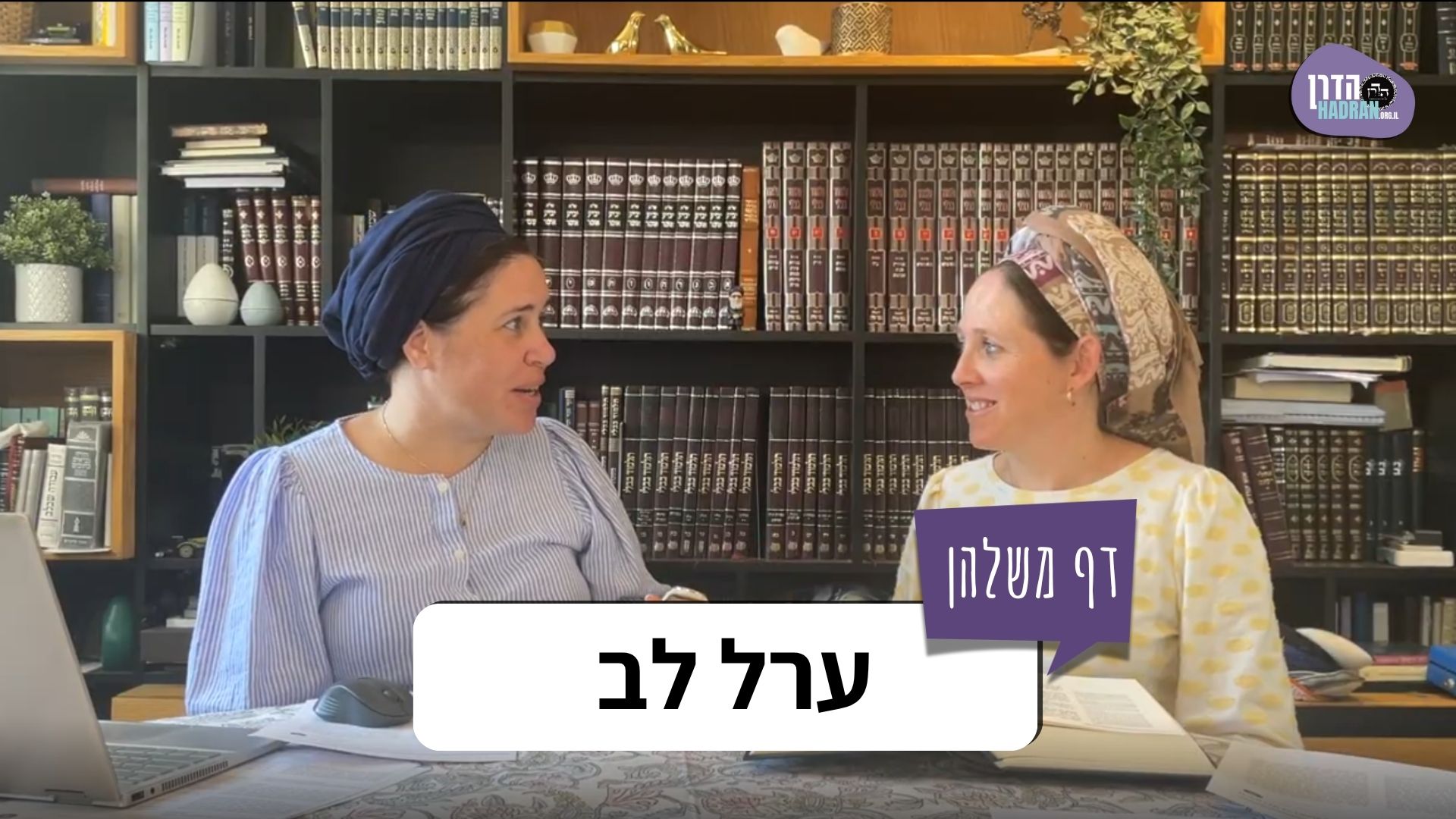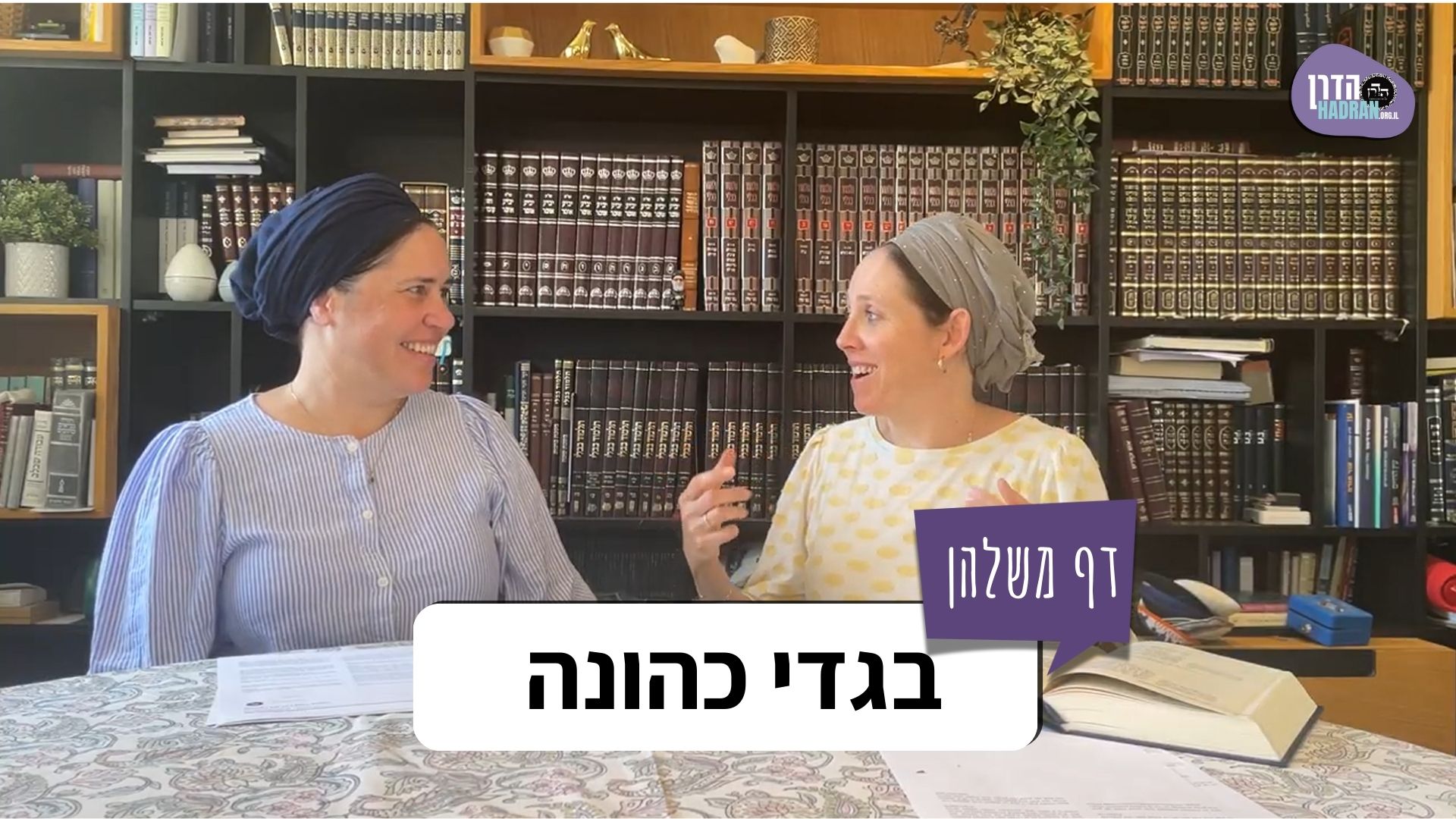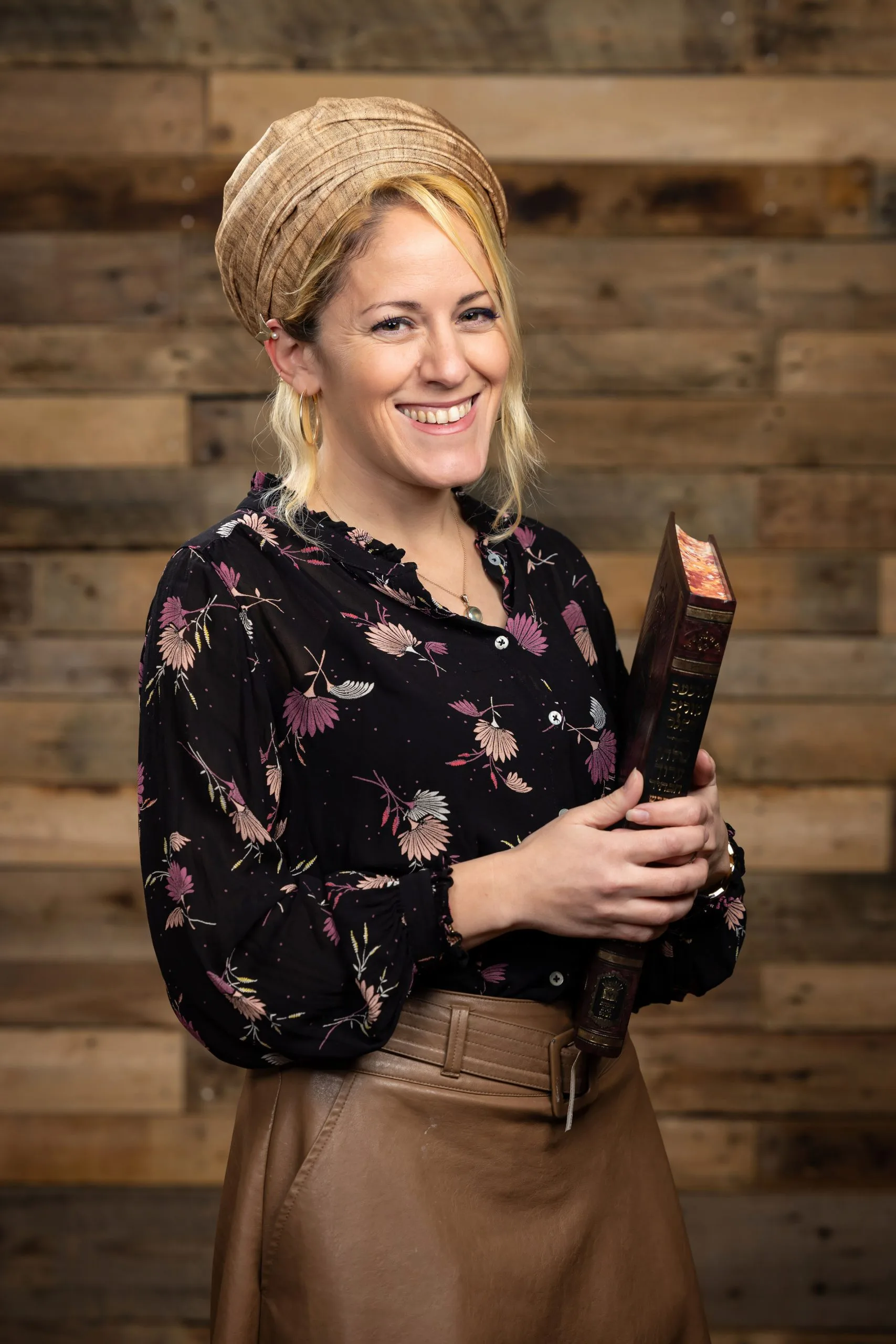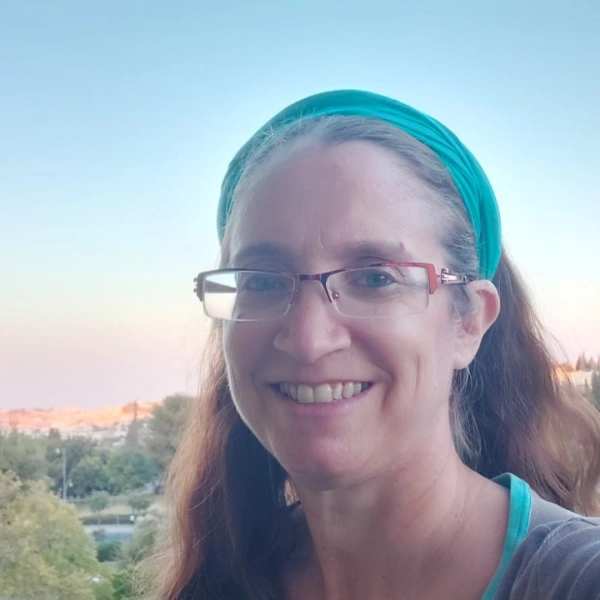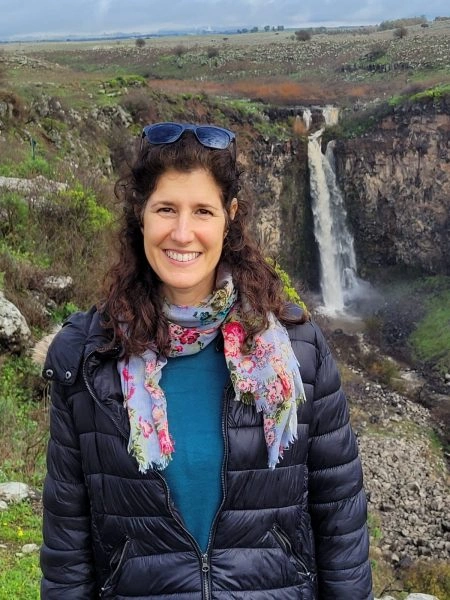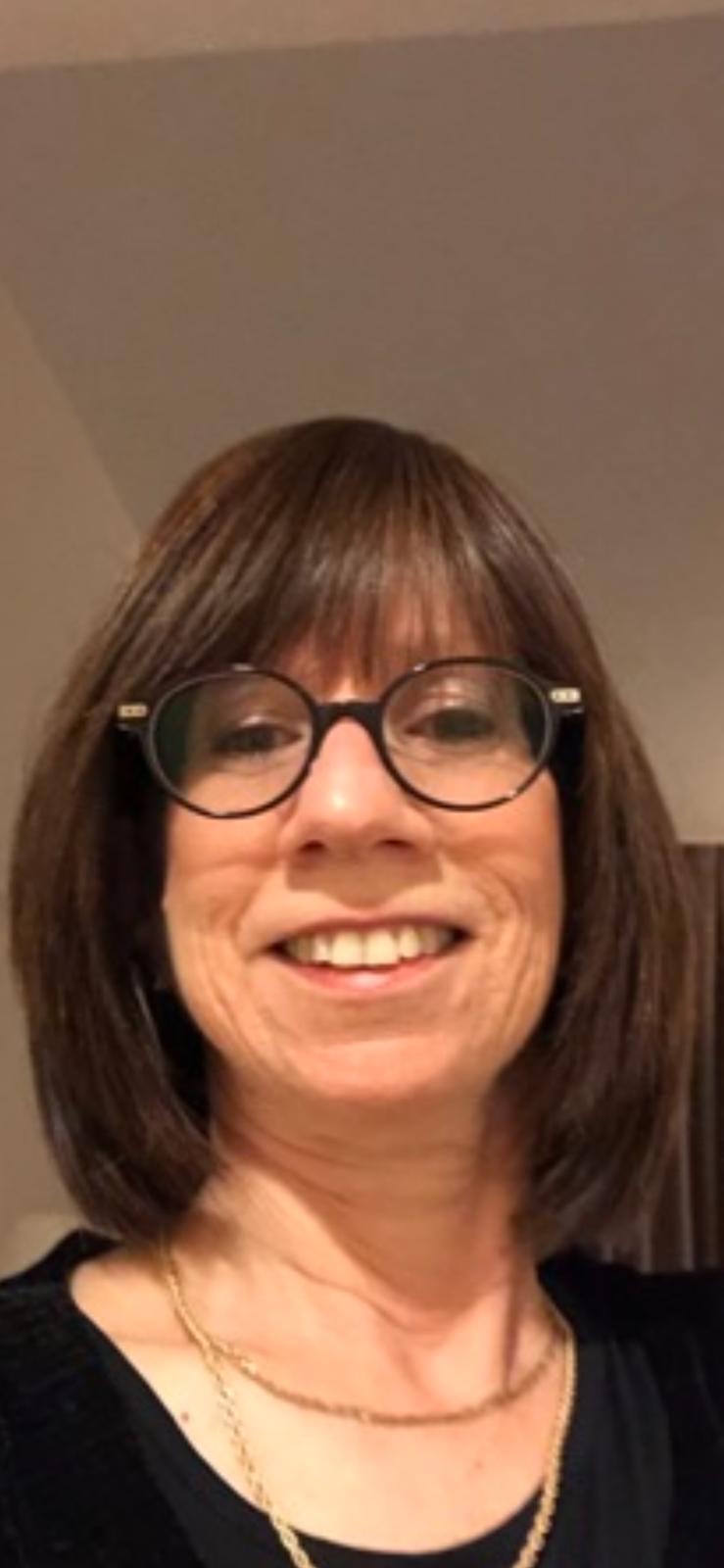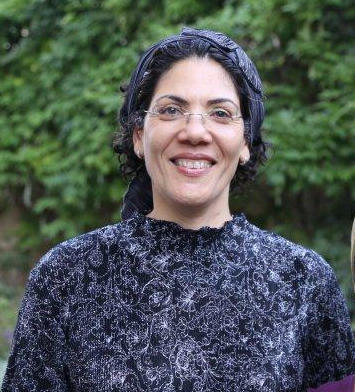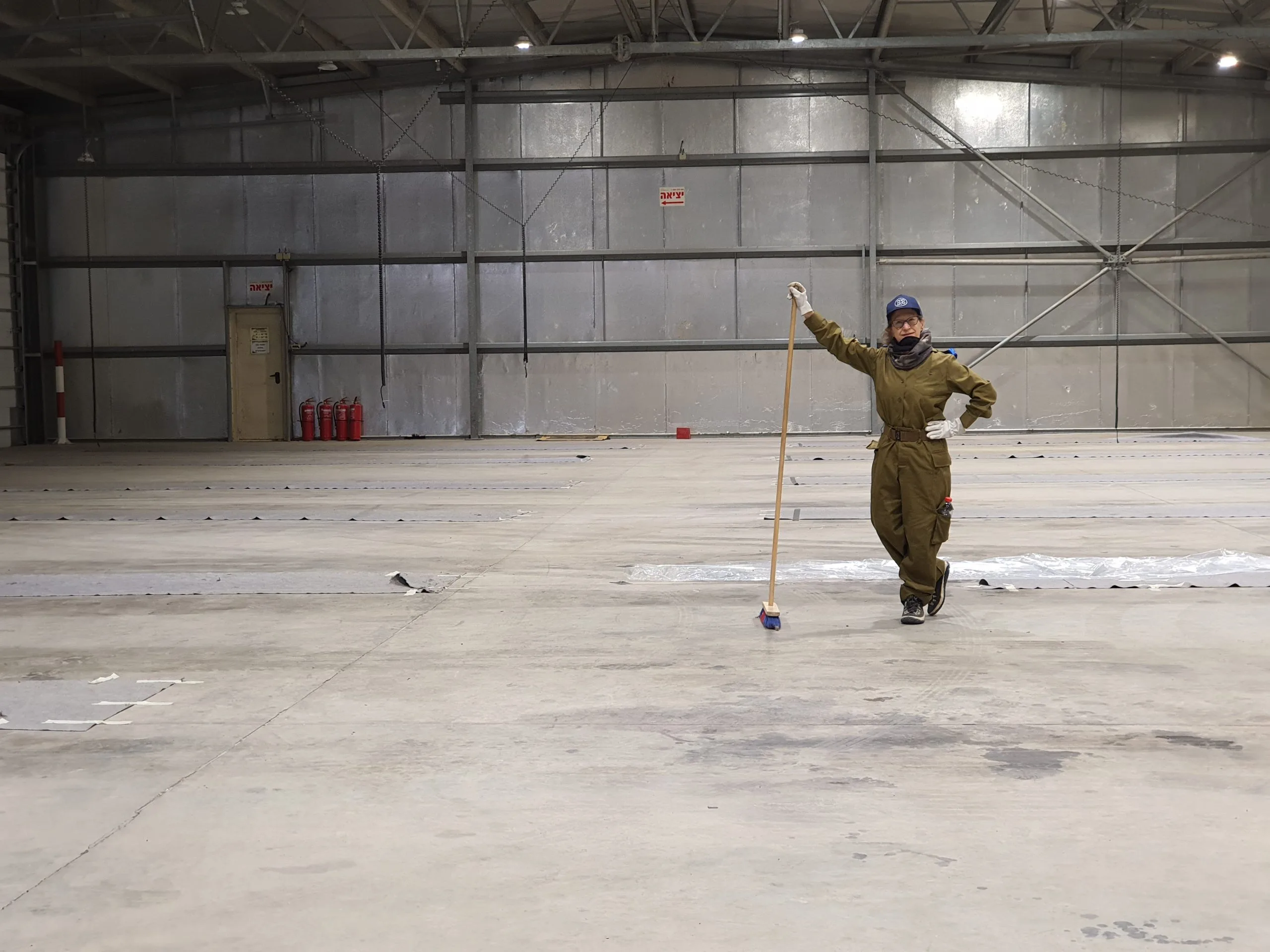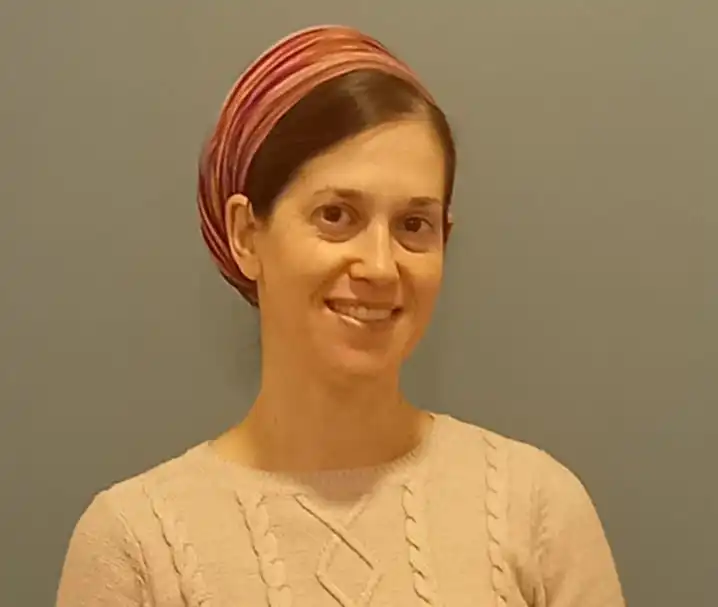מסכת זבחים
מסכת זבחים מוקדש ע”י אסתר קרמר לע”נ אביה מני גרוס.
הלימוד השבוע מוקדש ע”י רוברט ופאולה כהן לע”נ יוסף בן משה הכהן ז”ל. יוסף היה חזן שאהב מאוד לשיר, עבד קשה בחייו והיה מאוד מסור למשפחתו ולקהילה.
רוצה להקדיש שיעור?

תקציר
כל העליות בבית המקדש היו בשיפוע של שלוש אמות לאורך על אמה אחת בגובה, חוץ מהכבש של המזבח, שהיה בעל שיפוע מתון יותר של שלוש וחמש תשיעיות אמות. הסיבה לכך היא שהכהנים היו צריכים לשאת את איברי הקרבנות אל ראש המזבח.
הקמיצה – לקיחת קומץ מהמנחה – הייתה יכולה להיעשות בכל מקום בעזרה. שיירי המנחה נאכלו על ידי הכהנים הזכרים, יכלו להיות מוכנים בכל דרך, והותר לאוכלם רק באותו היום ובלילה שלאחריו, עד חצות.
רבי אלעזר הסביר שאם הקמיצה נעשתה בהיכל, היא כשרה, שכן היא דומה לבזיכי הלבונה (שגם בהן נאמרה המילה "אזכרתה” שמובאות מתוך ההיכל ונשרפות מחוץ לו. רבי ירמיה הקשה מברייתא שנראה ממנה שהכהנים עושים את הקמיצה במקום שבו הבעלים מביאים להם את המנחה, כלומר, לא בהיכל, שבו רק כהנים רשאים להיכנס. אולם מובאות שתי תשובות שונות לברייתא זו, כאשר הראשונה נדחית. כל אחת מהתשובות מראה שהברייתא לא באה להגביל את מקום הקמיצה, אלא להרחיבו.
רבי יוחנן פסק ששלמים יכולים להישחט בהיכל, שכן אם ניתן לשחוט אותם מחוץ לאוהל מועד, קל וחומר שניתן לשחוט אותם בפנים – שהרי אם המקום המשני כשר, ודאי שהמקום העיקרי כשר. על כך הובאה קושיה מברייתא העוסקת באכילה בהיכל, דבר האסור. כדי ליישב את הקושיה, הובחנה הבחנה בין שחיטה, שהיא עבודה, לבין אכילה, שאינה עבודה.
קרבן חטאת העוף מובא לכתחילה בפינת דרום-מערב של המזבח, בחציו התחתון, אך ניתן להקריבו בכל מקום על המזבח. שישה דברים נעשו בפינת דרום-מערב של המזבח – שלושה בחציו התחתון ושלושה בחציו העליון. למטה: חטאת העוף, הבאת המנחה למזבח לצורך קמיצה, ושפיכת שיירי הדם ליסוד. למעלה: ניסוך היין, ניסוך המים, ועולת העוף.
כאשר היו עולים על המזבח, היו עולים בצידו הימני של הכבש, פונים ימינה בראשו, מתחילים בפינת דרום-מזרח, מקיפים את המזבח נגד כיוון השעון, ויורדים בצידו השמאלי של הכבש. אך בשלושת המעשים שנעשו למעלה בפינת דרום-מערב, היו עולים בצידו השמאלי של הכבש כדי להגיע ישירות לאותה פינה, ולאחר סיום העבודה היו מסתובבים ויורדים משם.
חטאת העוף מובאת בפינת דרום-מערב, והדבר נלמד מהמנחה שמובאת גם היא שם. מיקום המנחה בדרום-מערב נלמד מהפסוק בויקרא ו:ז.
כלים
מסכת זבחים
מסכת זבחים מוקדש ע”י אסתר קרמר לע”נ אביה מני גרוס.
הלימוד השבוע מוקדש ע”י רוברט ופאולה כהן לע”נ יוסף בן משה הכהן ז”ל. יוסף היה חזן שאהב מאוד לשיר, עבד קשה בחייו והיה מאוד מסור למשפחתו ולקהילה.
כלים
העמקה
רוצה להבין מה באמת קורה מתחת לפני השטח של הסוגיה?
שיעורים, פודקאסטים והרחבות של מיטב המורות שלנו יפתחו לך עוד זוויות וכיווני חשיבה.
חדשה בלימוד הגמרא?
זה הדף הראשון שלך? איזו התרגשות עצומה! יש לנו בדיוק את התכנים והכלים שיעזרו לך לעשות את הצעדים הראשונים ללמידה בקצב וברמה שלך, כך תוכלי להרגיש בנוח גם בתוך הסוגיות המורכבות ומאתגרות.
פסיפס הלומדות שלנו
גלי את קהילת הלומדות שלנו, מגוון נשים, רקעים וסיפורים. כולן חלק מתנועה ומסע מרגש ועוצמתי.
זבחים סג
אָמַר רָמֵי בַּר חָמָא: כׇּל כִּבְשֵׁי כְּבָשִׁים – שָׁלֹשׁ אַמּוֹת לְאַמָּה, חוּץ מִכִּבְשׁוֹ שֶׁל מִזְבֵּחַ – שֶׁהָיָה שָׁלֹשׁ אַמּוֹת וּמֶחֱצָה וְאֶצְבַּע וּשְׁלִישׁ אֶצְבַּע בְּזַכְרוּתָא.
Rami bar Ḥama says: The slope of each of the minor ramps, was one cubit of rise per three cubits of run; this was true aside from the main ramp of the altar, which rose one cubit in three and a half cubits and one fingerbreadth and one-third of a fingerbreadth, measured by the tip of the thumb. The slope of the main ramp of the altar was slightly less than that of the minor ramps in order to make it easier for the priests to ascend the ramp while holding the sacrificial portions.
מַתְנִי׳ מְנָחוֹת הָיוּ נִקְמָצוֹת בְּכׇל מָקוֹם בָּעֲזָרָה, וְנֶאֱכָלוֹת לִפְנִים מִן הַקְּלָעִים – לְזִכְרֵי כְהוּנָּה, בְּכׇל מַאֲכָל, לְיוֹם וָלַיְלָה עַד חֲצוֹת.
MISHNA: Handfuls were removed from the meal offerings in any place in the Temple courtyard and were consumed within the area enclosed by the curtains by males of the priesthood, prepared in any form of food preparation that he chooses, e.g., roasted or boiled, for one day and night, until midnight.
גְּמָ׳ אָמַר רַבִּי אֶלְעָזָר: מִנְחָה שֶׁנִּקְמְצָה בַּהֵיכָל – כְּשֵׁירָה, שֶׁכֵּן מָצִינוּ בְּסִילּוּק בָּזִיכִין.
GEMARA: Rabbi Elazar says: A meal offering that had its handful removed in the Sanctuary is valid, as we found with regard to the removal of the two bowls of frankincense that were placed beside the shewbread on the Table, which was located in the Sanctuary. On Shabbat, these bowls of frankincense were removed and burned on the altar, which allowed the shewbread to be eaten. Removal of the bowls of frankincense paralleled the process of removing a handful from a meal offering; just as the removal of the bowls took place in the Sanctuary, so could the removal of a handful of the meal offering be done in the Sanctuary.
מֵתִיב רַבִּי יִרְמְיָה: ״וְקָמַץ מִשָּׁם״ – מִמָּקוֹם שֶׁרַגְלֵי הַזָּר עוֹמְדוֹת.
Rabbi Yirmeya raises an objection from a baraita: The verse states with regard to the meal offerings: “And he shall bring it to Aaron’s sons, the priests; and he shall take from there his handful” (Leviticus 2:2). The term “from there” indicates that the handful must be taken from a place where the feet of the non-priest who brought the meal offering may stand, i.e., the Temple courtyard, but not the Sanctuary, in direct contradiction to the opinion of Rabbi Elazar.
בֶּן בְּתִירָא אוֹמֵר: מִנַּיִן שֶׁאִם קָמַץ בִּשְׂמֹאל – שֶׁיַּחֲזִיר וְיִקְמוֹץ בְּיָמִין? תַּלְמוּד לוֹמַר: ״מִשָּׁם״ – מִמָּקוֹם שֶׁקָּמַץ כְּבָר.
The baraita continues: Ben Beteira says there is a different explanation of the verse. From where is it derived that if the priest removed a handful with his left hand, that he should return the handful to the vessel and then remove another handful with his right hand? The verse states: “And he shall take from there his handful,” indicating that he may take it from the place where he already removed a handful.
אִיכָּא דְּאָמְרִי: הוּא מוֹתֵיב לַהּ וְהוּא מְפָרֵק לַהּ; אִיכָּא דְאָמְרִי: אֲמַר לֵיהּ רַבִּי עֲקִיבָא לְרַבִּי יִרְמְיָה בַּר תַּחְלִיפָא, אַסְבְּרַהּ לָךְ: לֹא נִצְרְכָא אֶלָּא לְהַכְשִׁיר כׇּל הָעֲזָרָה כּוּלָּהּ.
The Gemara answers: There are those who say that Rabbi Yirmeya raises the objection and he resolves it, and there are those who say that Rabbi Akiva said to Rabbi Yirmeya bar Taḥlifa: I will explain to you the solution. The verse that indicates that the handful is taken from a place where non-priests may stand is necessary only to render the entire Temple courtyard valid for removing the handful, but not to indicate that one may not take the handful in the Sanctuary.
סָלְקָא דַּעְתָּךְ אָמֵינָא: הוֹאִיל וְעוֹלָה קׇדְשֵׁי קָדָשִׁים, וּמִנְחָה קׇדְשֵׁי קָדָשִׁים; מָה עוֹלָה טְעוּנָה צָפוֹן, אַף מִנְחָה טְעוּנָה צָפוֹן.
This was necessary because it might enter your mind to say that since a burnt offering is one of the offerings of the most sacred order, and a meal offering is also one of the offerings of the most sacred order, just as a burnt offering requires slaughter specifically in the north side of the Temple courtyard, so too, a meal offering requires the taking of the handful specifically in the north side of the Temple courtyard.
מָה לְעוֹלָה, שֶׁכֵּן כָּלִיל!
The Gemara responds: What is notable about a burnt offering? It is notable in that it is completely burned upon the altar. Therefore, one would not have derived that just as a burnt offering must be slaughtered in the north side of the Temple courtyard, the handful must be taken from a meal offering in the north side of the Temple courtyard.
מֵחַטָּאת. מָה לְחַטָּאת, שֶׁכֵּן מְכַפֶּרֶת עַל חַיָּיבֵי כָרֵיתוֹת!
And if one would attempt to derive that the handful of a meal offering must be taken in the north side of the Temple courtyard from the halakha pertaining to a sin offering, which is an offering of the most sacred order whose slaughtering must take place in the north side, yet is not completely consumed upon the altar, this too can be refuted: What is notable about a sin offering? It is notable in that it atones for those liable to receive karet.
מֵאָשָׁם. מָה לְאָשָׁם, שֶׁכֵּן מִינֵי דָמִים!
And if one would attempt to derive that the handful of a meal-offering must be taken in the north side of the Temple courtyard from the halakha pertaining to a guilt offering, which is an offering of the most sacred order that must be slaughtered in the north, and that does not share the unique characteristics of the burnt offering or sin offering, this too can be refuted: What is notable about a guilt offering? It is notable in that it is one of the types of offerings whose sacrificial rites are performed with their blood, which is not so with regard to a meal offering.
מִכּוּלְּהוּ. מָה לְכוּלְּהוּ, שֶׁכֵּן מִינֵי דָמִים!
The Gemara adds: It also cannot be suggested to draw an analogy from the common element shared by all of the offerings mentioned above. What is notable about all of them? They are notable in that they are all types of offerings whose sacrificial rites are performed with their blood.
אֶלָּא אִיצְטְרִיךְ; סָלְקָא דַּעְתָּךְ אָמֵינָא, הוֹאִיל וּכְתִיב: ״וְהִגִּישָׁהּ אֶל הַמִּזְבֵּחַ״, ״וְהֵרִים מִמֶּנּוּ בְּקֻמְצוֹ״ –
The Gemara presents a different answer: Rather, it was necessary for the baraita to teach that the handful may be taken from the meal offering anywhere in the Temple courtyard because it may enter your mind to say that since it is written: “And he shall bring it to the altar” (Leviticus 2:8), and then it states: “And he shall take up from there his handful” (Leviticus 6:8), indicating that the handful must be taken from the vessel in which the meal offering was brought near the altar, that the verses also indicate that the handful must be taken in the place where the vessel is brought near the altar.
מָה הַגָּשָׁה בְּקֶרֶן מַעֲרָבִית דְּרוֹמִית, אַף קְמִיצָה בְּקֶרֶן מַעֲרָבִית דְּרוֹמִית; קָא מַשְׁמַע לַן.
Therefore, just as one must bring the meal offering to the southwest corner of the altar, so too, the removal of its handful must take place at the southwest corner of the altar. To counter this, the baraita teaches us that the removal of the handful may take place anywhere in the Temple courtyard.
אָמַר רַבִּי יוֹחָנָן: שְׁלָמִים שֶׁשְּׁחָטָן בַּהֵיכָל – כְּשֵׁרִים, שֶׁנֶּאֱמַר: ״וְשָׁחֲטוּ (אוֹתוֹ) פֶּתַח אֹהֶל מוֹעֵד״ – וְלֹא יְהֵא טָפֵל חָמוּר מִן הָעִיקָּר.
§ Rabbi Yoḥanan says: Peace offerings that one slaughtered in the Sanctuary are valid, as it is stated: “And he shall slaughter it at the entrance of the Tent of Meeting” (Leviticus 3:2), i.e., in the courtyard; and the courtyard, which is of secondary sanctity, should not be weightier than the place of primary sanctity. Accordingly, as the offering is valid if it was slaughtered in the courtyard, it is certainly valid if it was slaughtered in the Sanctuary.
מֵיתִיבִי: רַבִּי יוֹחָנָן בֶּן בְּתִירָה אוֹמֵר, מִנַּיִן שֶׁאִם הִקִּיפוּ גּוֹיִם אֶת כׇּל הָעֲזָרָה – שֶׁהַכֹּהֲנִים נִכְנָסִין לְשָׁם וְאוֹכְלִין שָׁם קׇדְשֵׁי קָדָשִׁים? תַּלְמוּד לוֹמַר: ״בְּקֹדֶשׁ הַקֳּדָשִׁים תֹּאכְלֶנּוּ״.
The Gemara raises an objection to Rabbi Yoḥanan’s statement from a baraita: Rabbi Yoḥanan ben Beteira says: From where is it derived that if gentiles surrounded the entire Temple courtyard and were attacking, making it impossible for the priests to remain there, the priests may enter that area, i.e., the Sanctuary, and eat the offerings of the most sacred order there? The verse states: “In a most holy place shall you eat it” (Numbers 18:10).
וְאַמַּאי? נֵימָא: ״בְּחָצֵר אֹהֶל מוֹעֵד יֹאכְלוּהָ״ – וְלֹא יְהֵא טָפֵל חָמוּר מִן הָעִיקָּר!
The Gemara asks: But why is there a need to derive the halakha from this source? Let us say that it can be derived from the verse: “In the court of the Tent of Meeting they shall eat it” (Leviticus 6:9), and the place of secondary sanctity should not be weightier than the place of primary sanctity. Therefore, similar to Rabbi Yoḥanan’s statement, if the sacrificial food can be eaten in the courtyard, it can certainly be eaten in the Sanctuary. The fact that the baraita requires another source indicates that Rabbi Yoḥanan’s method of derivation is not valid.
הָכִי הַשְׁתָּא?! הָתָם עֲבוֹדָה – דְּאָדָם עוֹבֵד בִּמְקוֹם רַבּוֹ, אָמְרִינַן: לֹא יְהֵא טָפֵל חָמוּר מִן הָעִיקָּר. אֲכִילָה – דְּאֵין אָדָם אוֹכֵל בִּמְקוֹם רַבּוֹ, לֹא יְהֵא טָפֵל חָמוּר מִן הָעִיקָּר – לָא אָמְרִינַן.
The Gemara answers: How can these cases be compared? There, with regard to slaughtering offerings, the act of slaughter is a sacrificial rite, and a person serves in the presence of his master. Therefore, we say that the place of secondary sanctity should not be weightier than the place of primary sanctity, and if one can slaughter an offering in the courtyard, he can certainly do so in the Sanctuary. By contrast, in the case of eating sacrificial food, which is different because a person does not eat in the presence of his master, we do not say the rationale that the place of secondary sanctity should not be weightier than the place of primary sanctity. Therefore, a verse was required to teach that the priest may partake of the offerings in the Sanctuary.
מַתְנִי׳ חַטַּאת הָעוֹף הָיְתָה נַעֲשֵׂית עַל קֶרֶן דְּרוֹמִית מַעֲרָבִית; וּבְכׇל מָקוֹם הָיְתָה כְּשֵׁירָה, אֶלָּא זֶה הָיְתָה מְקוֹמָהּ. וּשְׁלֹשָׁה דְּבָרִים הָיְתָה אוֹתָהּ קֶרֶן מְשַׁמֶּשֶׁת מִלְּמַטָּה, וּשְׁלֹשָׁה מִלְּמַעְלָה. מִלְּמַטָּה: חַטַּאת הָעוֹף, וְהַגָּשׁוֹת, וּשְׁיָרֵי הַדָּם.
MISHNA: The sacrificial rite of a bird sin offering would be performed at the southwest corner of the altar. And if its sacrificial rite was performed in any place on the altar, the offering was deemed valid; but that corner was its designated place. And there were three matters for which the portion of that corner below the red line that served as the demarcation between the upper and lower portions of the altar served as the proper location, and there were three matters for which the portion of that corner above the red line served as their proper location. The following rites were performed below the red line: Sacrificing a bird sin offering, and bringing meal offerings near the altar before removal of the handful, and pouring out the remaining blood.
וּמִלְּמַעְלָן: נִיסּוּךְ הַיַּיִן, וְהַמַּיִם, וְעוֹלַת הָעוֹף כְּשֶׁהִיא רַבָּה בַּמִּזְרָח.
And the following rites were performed above the red line: The wine libation that is brought together with animal offerings or as an offering by itself, and the water libation on the festival of Sukkot, and sacrificing a bird burnt offering when they were numerous and it was impossible to perform the rite in the east, i.e., the southeastern corner where the bird burnt offering was sacrificed.
כׇּל הָעוֹלִין לַמִּזְבֵּחַ – עוֹלִין דֶּרֶךְ יָמִין,
All those who ascend the ramp to the altar ascend via the right side of the ramp toward the southeast corner
וּמַקִּיפִין וְיוֹרְדִין דֶּרֶךְ שְׂמֹאל; חוּץ מִן הָעוֹלֶה לִשְׁלֹשָׁה אֵלּוּ – שֶׁהָיוּ עוֹלִין וְיוֹרְדִין עַל הֶעָקֵב.
and circle the altar until reaching the southwest corner and descend via the left side of the ramp, except for one who ascends for one of these three matters, where they would ascend directly to the southwest corner of the altar, and descend by turning on their heels and retracing the path by which they ascended rather than circling the altar.
גְּמָ׳ מְנָא הָנֵי מִילֵּי? אָמַר רַבִּי יְהוֹשֻׁעַ, אָמַר קְרָא: ״לֹא יָשִׂים עָלֶיהָ שֶׁמֶן וְלֹא יִתֵּן עָלֶיהָ לְבֹנָה כִּי חַטָּאת הִיא״ – חַטָּאת קְרוּיָה מִנְחָה, וּמִנְחָה קְרוּיָה חַטָּאת;
GEMARA: The Gemara asks a question about the mishna’s statement that the sacrificial rite of a bird sin offering is performed at the southwest corner of the altar: From where are these matters derived? Rabbi Yehoshua says: The verse states with regard to the sin offering of a destitute sinner, which is a meal offering brought in lieu of an animal or bird: “He shall put no oil upon it, neither shall he put any frankincense on it; for it is a sin offering” (Leviticus 5:11). From this verse it is evident that a sin offering is called a meal offering and a meal offering is called a sin offering, so that their halakhot may be compared.
מָה חַטָּאת טְעוּנָה צָפוֹן – אַף מִנְחָה טְעוּנָה צָפוֹן, וּמָה מִנְחָה בְּקֶרֶן מַעֲרָבִית דְּרוֹמִית – אַף חַטָּאת בְּקֶרֶן מַעֲרָבִית דְּרוֹמִית.
Just as a sin offering requires slaughtering in the north section of the Temple courtyard, so too, the handful of a meal offering requires sanctification in a service vessel in the north. And just as a meal offering is brought near to the southwest corner of the altar, so too, the blood of a sin offering is sprinkled on the southwest corner of the altar.
וּמִנְחָה גּוּפַהּ מְנָלַן? דְּתַנְיָא: ״לִפְנֵי ה׳״ – יָכוֹל בַּמַּעֲרָב? תַּלְמוּד לוֹמַר: ״אֶל פְּנֵי הַמִּזְבֵּחַ״.
The Gemara asks: And with regard to a meal offering itself, from where do we derive that it must be brought near the altar at the southwest corner? As it is taught in a baraita with regard to the verse: “And this is the law of the meal offering…before the Lord, in front of the altar” (Leviticus 6:7). From the phrase: “Before the Lord,” one might have thought that the rite of bringing the meal offering near the altar must be performed at the west side of the altar, which faces the Sanctuary. Therefore, the verse states: “In front of the altar,” which is its south side, from where the priests ascend the ramp.
אִי ״אֶל פְּנֵי הַמִּזְבֵּחַ״ – יָכוֹל בַּדָּרוֹם? תַּלְמוּד לוֹמַר: ״לִפְנֵי ה׳״. הָא כֵּיצַד? מַגִּישָׁהּ בְּקֶרֶן מַעֲרָבִית דְּרוֹמִית כְּנֶגֶד חוּדָּהּ שֶׁל קֶרֶן, וְדַיּוֹ.
The baraita continues: If the verse merely stated: “In front of the altar,” one might have thought that the practice of bringing the meal offering near the altar must be performed at the south side of the altar. Therefore, the verse states: “Before the Lord,” which indicates the west side. How can these texts be reconciled? The priest brings it near at the southwest corner of the altar, opposite the edge of the corner of the altar, and that is sufficient.
רַבִּי אֱלִיעֶזֶר אוֹמֵר: יָכוֹל יַגִּישֶׁנָּה לְמַעֲרָבָהּ שֶׁל קֶרֶן אוֹ לִדְרוֹמָהּ שֶׁל קֶרֶן? אָמַרְתָּ: כׇּל מָקוֹם שֶׁאַתָּה מוֹצֵא שְׁנֵי מִקְרָאוֹת, אֶחָד מְקַיֵּים עַצְמוֹ וּמְקַיֵּים חֲבֵירוֹ, וְאֶחָד מְקַיֵּים עַצְמוֹ וּמְבַטֵּל חֲבֵירוֹ – מַנִּיחִין זֶה שֶׁמְּקַיֵּים עַצְמוֹ וּמְבַטֵּל חֲבֵירוֹ, וְתוֹפְשִׂין אֶת שֶׁמְּקַיֵּים עַצְמוֹ וּמְקַיֵּים חֲבֵירוֹ.
The baraita continues: Rabbi Eliezer says: One might have thought that the priest may bring it near the altar to the west of the southwest corner or to the south of the southwest corner. You must say: Anywhere you find two verses, and acting in accordance with one of them fulfills itself, i.e., the requirement stated in that verse, and fulfills the requirement stated in the other verse, whereas acting in accordance with the other one of them fulfills itself and negates the requirement stated in the other verse, one leaves the verse that fulfills itself and negates the other, and seizes the verse that fulfills itself and fulfills the other verse as well.
כְּשֶׁאַתָּה אוֹמֵר ״אֶל פְּנֵי ה׳״ בַּמַּעֲרָב, הֵיכָן קִיַּימְתָּ ״אֶל פְּנֵי הַמִּזְבֵּחַ״? וּכְשֶׁאַתָּה אוֹמֵר ״אֶל פְּנֵי הַמִּזְבֵּחַ״ בַּדָּרוֹם, קִיַּימְתָּ ״לִפְנֵי ה׳״.
The Gemara explains: In this context, when you say: “Before the Lord,” which indicates that the meal offering should be brought near the altar at the west side of the altar, how have you fulfilled the other part of the verse: “In front of the altar,” which indicates the south side? But when you say: “In front of the altar,” and bring it near the altar at the south side, you have also fulfilled the phrase: “Before the Lord.” Consequently, the meal offering must be brought near the south side of the altar.
בַּדָּרוֹם הֵיכָן קִיַּימְתָּ? אָמַר רַב אָשֵׁי: קָסָבַר הַאי תַּנָּא, כּוּלֵּיהּ מִזְבֵּחַ בַּצָּפוֹן קָאֵי.
The Gemara asks: If one brought the meal offering near the altar at the south side, how have you fulfilled the phrase: “Before the Lord”? Rav Ashi says: This tanna holds that the entire altar stood in the north section of the Temple courtyard. The southern side of the altar was directly aligned with the midpoint of the Temple courtyard, directly opposite the entrance of the Sanctuary, and therefore it is considered “before the Lord.”
בְּכׇל מָקוֹם הָיְתָה כְּשֵׁירָה [וְכוּ׳]. מַאי קָאָמַר? אָמַר רַב אָשֵׁי, הָכִי קָאָמַר: בְּכׇל מָקוֹם הָיְתָה כְּשֵׁירָה לִמְלִיקָתָהּ, אֶלָּא זֶה הָיָה מְקוֹמָהּ לְהַזָּאָתָהּ.
§ The mishna teaches that if the sacrificial rite of a bird sin offering was performed in any place on the altar, the offering is valid, but the southwest corner was its designated place. The Gemara asks: What is the mishna saying when it states that the southwest corner was its designated place? The mishna already stated that the sacrificial rite of a bird sin offering should be performed at the southwest corner. Rav Ashi said: This is what the mishna is saying: Any place was valid for its pinching, but the southwest corner was the place for the sprinkling of its blood.
תְּנֵינָא לְהָא דְּתָנוּ רַבָּנַן: מְלָקָהּ בְּכׇל מָקוֹם בַּמִּזְבֵּחַ – כְּשֵׁירָה. הִיזָּה דָּמָהּ בְּכׇל מָקוֹם – כְּשֵׁירָה, הִיזָּה וְלֹא מִיצָּה – כְּשֵׁירָה; וּבִלְבַד שֶׁיִּתֵּן מִחוּט הַסִּיקְרָא וּלְמַטָּה מִדַּם הַנֶּפֶשׁ.
The Gemara notes: We learn in this mishna that which the Sages taught explicitly in a baraita with regard to a bird sin offering: If the priest pinched its nape in any place on the altar, it is valid. If he sprinkled its blood in any place on the altar, it is valid. If he sprinkled the blood, but did not squeeze out the remaining blood upon the lower part of the wall of the altar, in accordance with the verse: “And he shall sprinkle of the blood of the sin offering upon the side of the altar; and the rest of the blood shall be squeezed out at the base of the altar” (Leviticus 5:9), it is nevertheless valid, provided that he places some of the blood of the soul anywhere on the altar from the red line and below.
מַאי קָאָמַר? הָכִי קָאָמַר: מְלָקָהּ בְּכׇל מָקוֹם בַּמִּזְבֵּחַ – כְּשֵׁירָה. מִיצָּה דָּמָהּ בְּכׇל מָקוֹם בַּמִּזְבֵּחַ – כְּשֵׁירָה,
The Gemara asks: What is the baraita saying? It first states that the offering is valid no matter where on the altar its blood is sprinkled, and it then states that blood must be placed specifically below the red line. The Gemara answers: This is what the baraita is saying: If he pinched its nape in any place on the altar, it is valid. If he squeezed out its blood in any place on the altar, it is valid,
